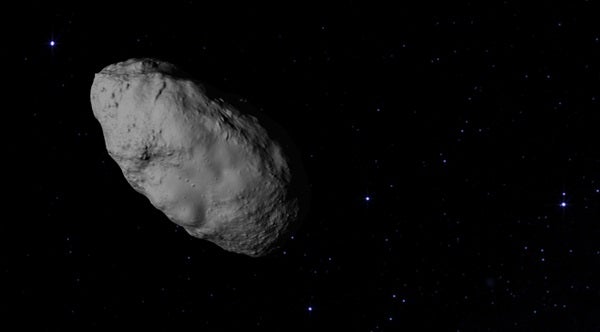One of the very first properties of the asteroids to be measured will be their gravity and centers of mass, which we do not yet know with high confidence. We must do this in order to navigate both spacecraft around their target asteroids.
Regardless of the gravity we measure, we know that both spacecraft are much, much less massive than the asteroids: Bennu is about 130 billion pounds (62 billion kilograms), with Ryugu likely being more massive. Hayabusa2 was about 1,300 pounds (590kg) at launch, and OSIRIS-REx about 3,300 pounds (1,500kg). The spacecraft are not massive enough and neither will operate long enough around their target asteroids to affect their orbits.
When either spacecraft collects samples, it is in contact with the surface only for a few seconds and does not have the mass or velocity to push these more massive objects out of their current orbits. Even the explosive experiment of Hayabusa2 is not powerful enough to cause any major issues to Ryugu’s orbit.
The force the Sun exerts on planetary bodies is called the Yarkovsky effect. For small, airless bodies such as Bennu and Ryugu, the Sun’s photons heat their surfaces. As the asteroids rotate and cool, heat is given off, and that exerts a tiny force on the asteroid. Although it is a tiny force, the effect is cumulative and occurs over tens of thousands to millions of years, thus producing changes in an asteroid’s orbit.
Hayabusa2 and OSIRIS-REx will not operate long enough around their target asteroids to affect them as the Sun does, but they will analyze for the Yarkovsky effect. Remember, we will learn so much from these two missions, but the final prize is that they will be the first missions to bring home pristine samples of carbonaceous asteroids for analysis!
(Rowan University) and
Shogo Tachibana
(Hokkaido University) are both
Co-Investigators on the OSIRIS-REx and Hayabusa2 missions










